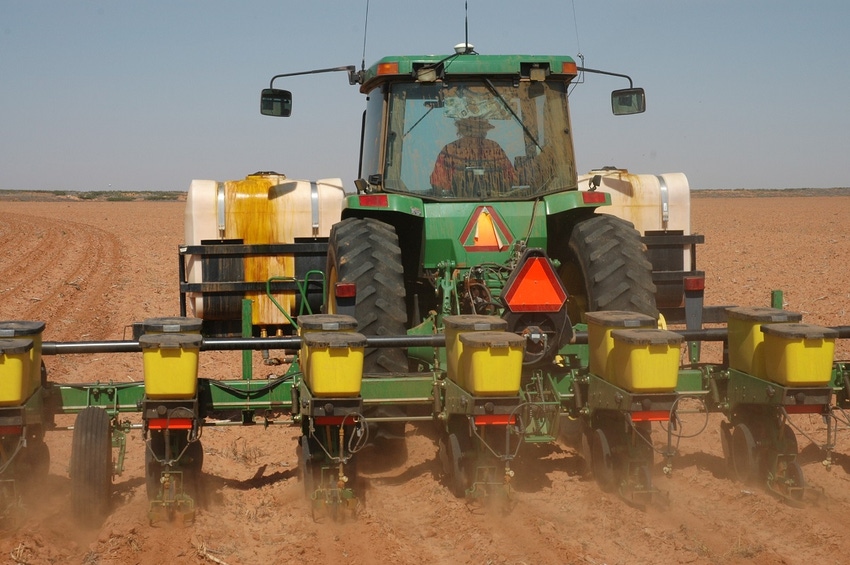
High Plains cotton farmers are looking for an edge, any edge, this spring to give them the best shot at eking out a profit—variety selection may be a key factor.
They face the prospect of a market that may decline even more by harvest, production costs with no evidence of dropping, and the always uncertain West Texas weather. Some remain uncertain about production financing for 2016.
Adding to the uncertainty is the availability of new technology—Xtend Flex and Enlist cotton—although so far without the accompanying chemistry approved.
Some growers, according to seed company representatives on hand at the recent Texas Gin Show in Lubbock, are looking for economical seed; others are looking for the best yield and quality packages, the best disease and nematode resistance, storm proof characteristics, and new technology.
“Yield and quality remain top priorities,” says, Ken Lege, PhytoGen. “They want the better price they’ll get for quality fiber but they also want cotton they can move quickly.”
He says cotton with 56 cents to 58 cents loan value “will go immediately. It will not sit in the loan forever.”
“High quality is where the value will be,” says Rick Minzenmayer, FiberMax. “Farmers we’re talking to want varieties that deliver high quality. And they have good options available.”
Lege says farmers are concerned about costs. “Cotton seed is an expensive up-front cost,” he says, “and the price of seed has been the top question I’ve had from growers this year. I’ve been asked about seed costs more this year than I have in the last 25 years. Every customer asks about seed price. That highlights the problems they face. And some still are not financed for the 2016 growing season.”
SEED COST ISSUES
Cost is encouraging some to plant conventional cotton this year, says Edward Jungmann, seed Source Genetics, Bishop, Texas. “Our business has been good,” he says. The glyphosate resistant weed issue has also pushed some growers back to conventional varieties, he adds, since producers can’t rely just on technology to control resistant and hard-to-control weed species. “Farmers are looking for less costly options.”
He says a relatively new variety, UA 222, out of Arkansas, “produces good yields and good quality.”
Gary Sanders, Americot, says his customers are looking at NexGen XtendFlex varieties. “They want to try the new technology, and they hope they get a chance during the season to use the dicamba product. But, even if they don’t, they want to see the new generation of cotton. That’s what they are excited about. We’re hoping it’s a good production year.”
He says producers are interested in NexGen 3500, 3517, and 4545. “A lot saw 3406 last year and liked it; now they want to see the new ones.”
Deltapine was unavailable during the gin show but responded to a Farm Press query on expectations for the 2016 cotton planting season.
For the latest on southwest agriculture, please check out Southwest Farm Press Daily and receive the latest news right to your inbox.
“West Texas weather always seems to be unpredictable, and growers are very adept at being successful despite changing conditions,” says Deltapine’s Eric Best, Lubbock. Moisture is always a limiting factor, he adds. “Over half of our four million cotton acres are solely rain fed, while most of the irrigated acres are somewhat limited in what water volume they can apply. “
Yield, he says is important, but growers also look for varieties that offer “consistency, stability and predictability. Successful varieties can yield under tough conditions while maintaining high fiber quality.”
He says producers also want varieties that yield well under better moisture regimes and also show good vigor, stand establishment, disease resistance, storm tolerance, and desired weed management traits.
He points to two Deltapine varieties, DP1044 B2RF and DP1219 B2RF, with stable dryland and irrigated performance. “A reduced price this year offer growers a lower cost alternative.”
He says the new Deltapine Bollgard II XtendFlex varieties—DP1518B2XF, DP1522B2XF, and DP1549B2XF, with Class of '16 DP1612B2XF and DP1646B2XF provide new weed management technology.
Lege says farmers are also looking at resistance traits. “They want Verticillium and root knot nematode resistance, and they want storm proof cotton. Seedling vigor is also a big issue early. They pay a lot for seed so they want it to come up.”
Minzenmayer says varieties that typically produce high quality fiber are in high demand and he encourages farmers to move quickly to assure they get the varieties they want to plant. “We have a lot of good varieties, but if you want a particular one, get seed secured.”
“Growers are looking for the best options available for the High Plains and especially for dryland acres,” Lege adds.
Seed company spokesmen say the area has plenty of deep moisture as planting season approaches but agree that growers need “a planting” rain to get the crop started.”
Sales so far have been good, company reps say, even in a depressed cotton market. They say potential for cotton looks better than any other option.
About the Author(s)
You May Also Like






